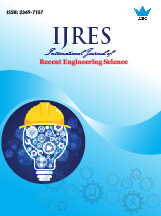Influence of Massage Types on the Badminton Player Fatigue Been Reviewed from Differences of Sex
 |
International Journal of Recent Engineering Science (IJRES) |  |
| © 2017 by IJRES Journal | ||
| Volume-4 Issue-4 |
||
| Year of Publication : 2017 | ||
| Authors : Julius Agung Saputro |
||
| DOI : 10.14445/23497157/IJRES-V4I4P102 |
How to Cite?
Julius Agung Saputro, "Influence of Massage Types on the Badminton Player Fatigue Been Reviewed from Differences of Sex," International Journal of Recent Engineering Science, vol. 4, no. 4, pp. 5-10, 2017. Crossref, https://doi.org/10.14445/23497157/IJRES-V4I4P102
Abstract
The purpose of this study was to determine (1) the difference of massage and exercise effect on lactic acid recovery after doing maximum activity. (2) sex differences on recovery of lactic acid levels thereafter. (3) the interaction between the massage method (Swedish massage and sports massage) and sex on the recovery of lactic acid levels thereafter. This research uses experimental method with factorial 2x2 factor. The study population is badminton players GOR Klaten. The sampling technique used is purposive random sampling. Samples were prepared based on experimental variables of 11 male players performed at a maximum of 6 x 35 meters, given the manipulation of massage in Sweden. 11 male players do a maximum of 6X35 meters and undergo sports manipulation. 11 female players perform a maximum of 6X35 meters and in the manipulation of Swedish massage massages. 11 female players do a maximum of 6X35 meters and undergo sports manipulation massage. The variables studied were two factor independent variables (manipulative variables and atibutive variables) and one dependent variable. Manipulative variables consist of Swedish massage and sports massage. Attributive variables consist of sample groups with male and female gender. Dependent variable in this research is lactic acid level. Data technique with practice and measurement. Intake of lactic acid content. Measurement of lactic acid content data with pre test is the measurement of lactic acid after maximal and posttest exercise that is measurement of lactic acid after manipulative massage. Data analysis technique used is analysis of variance analysis (anova) two lane at significance level a = 0,05. Conclusions: (1) there was a significant effect difference between Swedish massage and massage on lactic acid levels. Sports massage is better than Swedish massage. (2) There is a significant effect difference between male and female sex in lactic acid recovery. Men are faster at lowering lactic acid levels depending on the female sex. (3) There is a significant interaction between learning methods and sports and gender massage. More appropriate sports massage Dallam lowers lactic acid levels in male gender and Swedish massage is more appropriate in lowering lactic acid levels in women after performing the maximum activity.
Keywords
Swedish Massage, Sports Massage, Sex, Lactic Acid XPM
Reference
[1] Ali Maksum. (2012). Metode Penelitian Dalam Olahraga. Surabaya: Unesa University Press
[2] Bambang Priyonoadi, (2006). Pencegahan dan Perawatan Cedera. Makalah dalam Proses Pembelajaran Kuliah PPC untuk Mahasiswa FIK. Yogyakarta: FIK UNY.
[3] Bompa, T.O & Carrera, M.C. (2005). Periodization training for sport, (2ended).NewYork: Human Kinetics.
[4] Calder, A. (2005). Recovery training. Australian Coaching Council. Diambil pada tanggal 20 November 2016, dari Htttp://www.trainingsmartonline.com/images/free_Triathl ou_Articles/Triathlon_Training_Recovery.pdf.
[5] Ken Gray. (2009). Swedis massage. Amerika: Emperior.
[6] Purnomo, M. (2011). Asam laktat dan aktivitas SOD eritrosit pada masa pemulihan setelah latihan maksima. Jurnal media ilmu keolahragaan Indonesia, VOL 1, 155- 170.
[7] Sherwood, L. (2012). Fisiologi manusia dari sel ke sistem (6thEd). (Terjemahan Brahm. U. Pendit). Singapore Cengage Learning Asia Pte Ltd 5 Shenton Way. (Buku asli diterbitkan tahun 2007).
[8] Suharsimi Arikunto. (2010). Prosedur Penelitian. Edisi Revisi V. Jakarta PT Rineke Cipta.
[9] Sukadiyanto & Muluk, D. (2011). Pengantar teori dan metodologi melatih fisik. Bandung: Lubuk Agung
